Fulfilled promises of beaches
Our rest in Aquileia was somewhat disrupted at night by a thunderstorm and its accompanying hailstones. The experience was slightly unsetteling, as neither of us have ever been able to find properly sized icecubes for a potential cocktail right outside our tent in the middle of the night. But my dear old tent was still strong enough, and although not fully waterproof, at least waterproof enough to not make life miserable. In Aquileia we had a talk about our little bicycle trip: we're slowly finding a balance between our respective preferred ways of bicycle touring. We planned to have a slightly more regular schedule: a couple of days of cycling, about 40 kilometers per day, and then two days of rest.
With a newly partitioned route, and slightly short on sleep we left Aquileia towards Grado. Once more luck was on our side, as we had a little coffeebreak in a cafe as yet another downpour was unleashed from the heavens. So far, although we've certainly had a fair number of chances, we've never really been soaked through and through. The sun has also started to behave itself, as our days our still warm, but not murderously so. We traveled onwards on a bicycle path until we found a place that immediately threw all our previous planning into the wind.
We managed to find a reasonably secluded and unvisited beach with a view of the Adriatic sea, Trieste and the Istrian peninsula. We decided then and there that we would find a way to put up our tent there. It was a slice of paradise: the beaches were small but free of trash, there seemed to be little alcoves where driftwood served as improvised benches, and there was an elevated section next to the beach where one had a view of the sea among the shade of trees. As the evening arrived so did clouds that promised of thunder and rain, but through the local dynamics between wind, sea, the seasons and the shape of the land, those clouds were solely headed towards Trieste. Later in the evening the wind picked up, so we made certain our tent was set up properly and went to sleep.
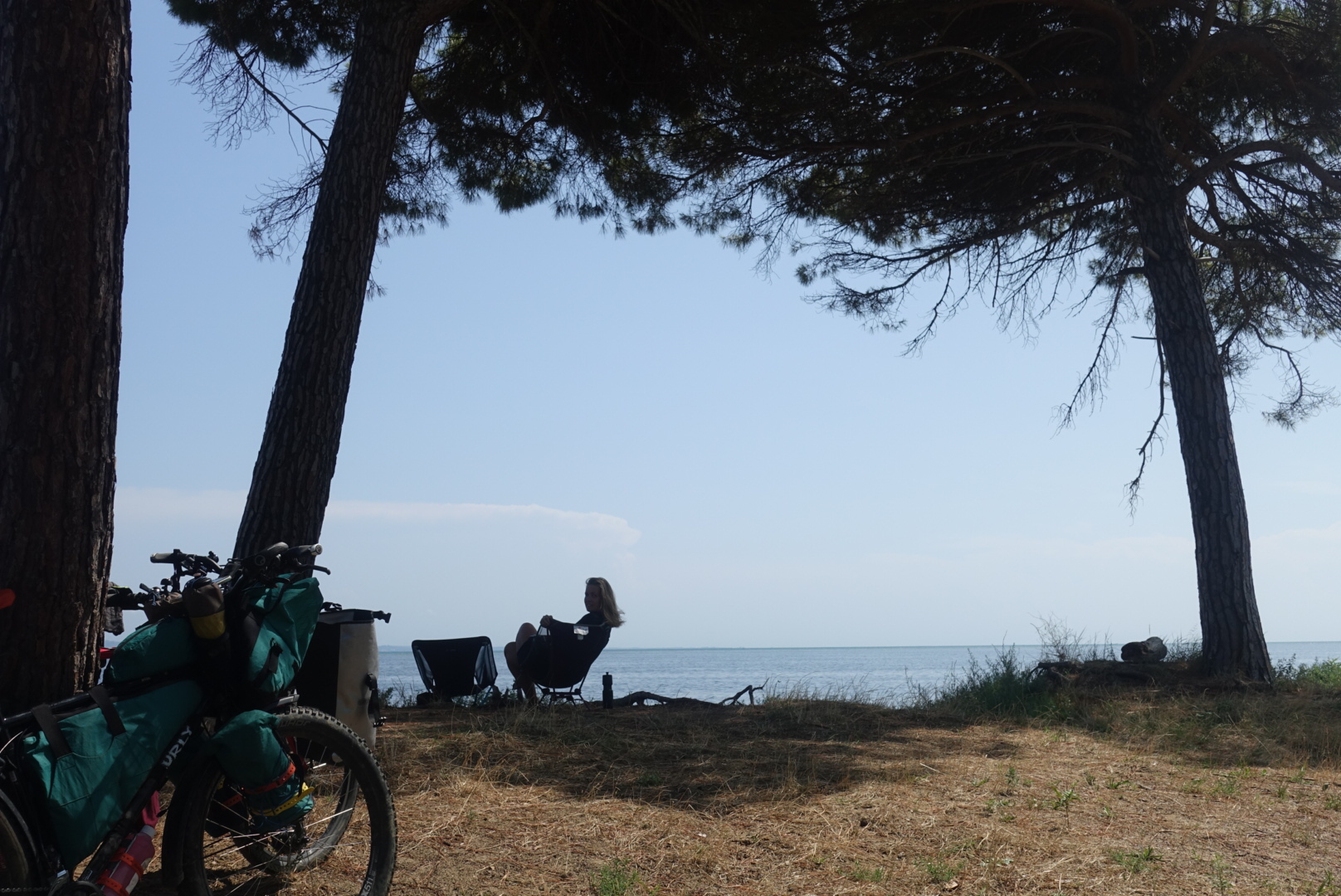
Visiting friends
We awoke on a beach. An incredible experience. While packing up we met a woman who explained how this little paradise came to be: there were a bunch of retired people who came to the beach every single day to take care of the place. They pick up the trash and remove the seaweed that washes ashore (without human intervention it would fill up the entire sliver of beach), and generally keep an eye on the place. What a wonderful gift to all of these unknown visitors of their beach.
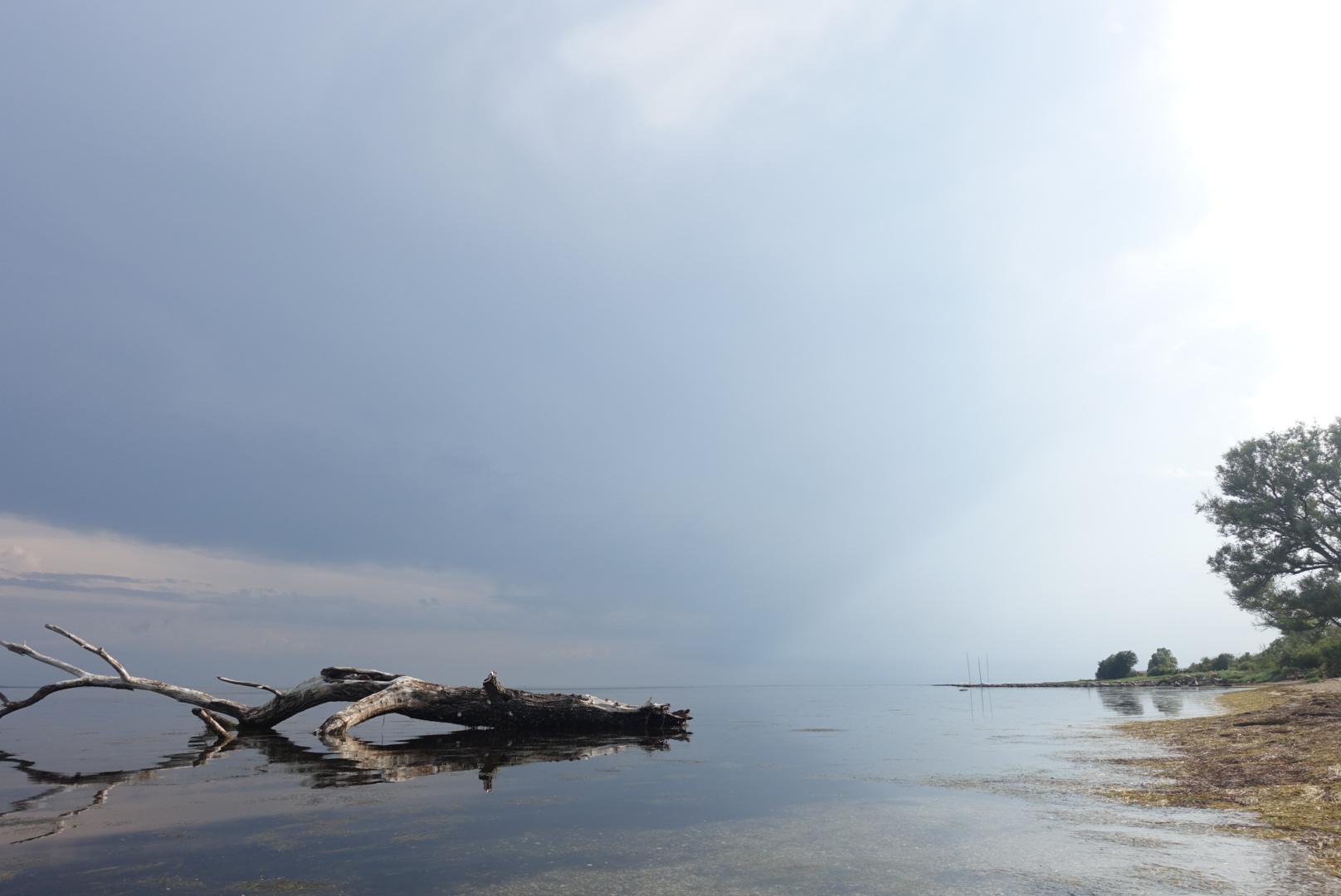
The woman asked about our bicycle trip, and we quickly learned that she made quite an impressive trip herself on a bamboo tandem built by her husband. She left us to pack up, and offered us coffee back at her van. Since we were quite tired from two nights of stormy weather we gladly accepted and reunited after our bike bags were packed once more.
She and her family were the most welcoming of people, offering us coffee, bread, water, and even some iced coffee for the road (which we promptly forgot before leaving). It was great listening to their stories about their self-supported tandem and bicycle trips, telling about our own trip, and talking about their bamboo bicycles (tandem, regular, folding, everything, see Masuelli Design) and the art of mechanically instead of electronically engineered machinery. They were so hospitable, we would have been able to spend all day at their van.
With mixed feelings our conversation was cut short due to an appointment we had with friends of mine who, by chance, were in Trieste that day. Due to the time constraints and our nights of bad sleep we opted to take the train from Monfalcone to Trieste, and to rent a room there to get at least one good night's sleep. That night we had dinner together, laughed a lot, and slept well. That morning it appeared once more that cycling plans are never set in stone, we now decided we would head to a particular camping in two days of cycling, and take as many days off the bike as we would like.
The Parenzana
In Trieste we were very close to the Parenzana route: an old railway road that is converted to a bicycle path, implying that the gradients will be very nice and that there would be no cars to worry about. We learned about this route from three Americans we met earlier on our trip (and which I wrote about), and now we finally embarked on its roads.
The first day was spent getting out of Trieste. It is always a bit stressful to travel along the main arteries of a city where traffic is plentiful and some of their drivers eager to speed past us, but there were nice sections where we had a bicycle path to ourselves. Close to Muggia we traded the main roads for the Parenzana proper, and promptly made our first border crossing together into Slovenia.
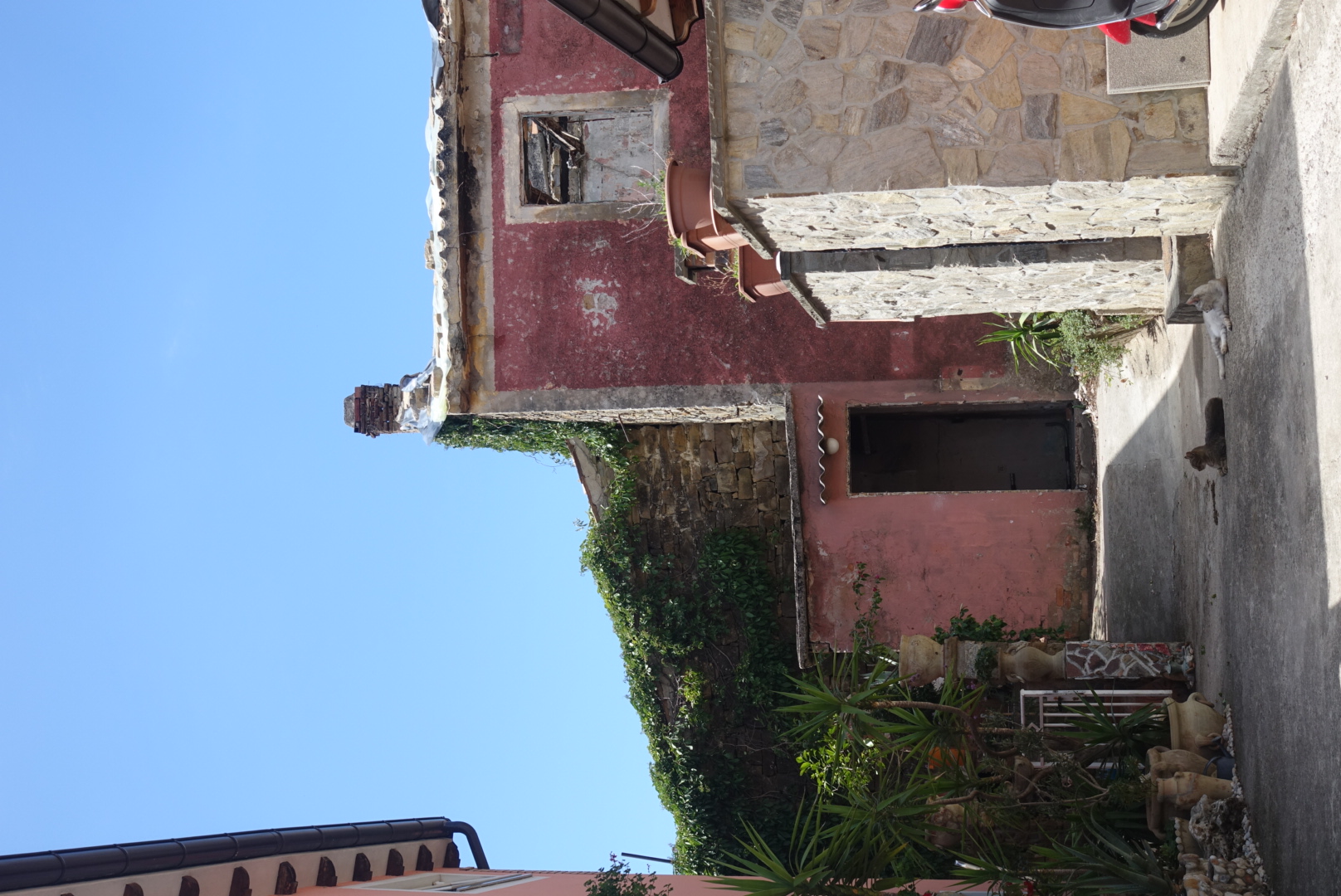
This was a rather short-lived experience, as the route would quickly guide us into Croatia. But one would not notice that these borders were indicative of different countries, if one were to judge them by the architecture and lay of the land. This is of course due to the history of this region, of which we know embarrasingly little.
The remainder of that day was spent next to the somewhat touristic shore, sometimes making a short escape into the hills. It was touristic, but not so much as to feel alien as a bunch of sunbaked bicycle tourists. We were already in awe of the car-free cycle route and the amount of trees that were in our sights once more. Occasionally, as we progressed along the gravel roads, those trees would part and offer us nice vistas, with the sea in the distance. We ended our day at campsite "Kaki Plac", a source of many jokes in Dutch, but also a very nice campingplace for cyclists. If you're in need of a camping that feels like a hostel from the 2010s, with nice amenities, friendly staff, and thoughtful extras (e.g. a bowl of vegetables with a tip jar next to it), then I would highly recommend going there (but maybe call and make a reservation, because although they arranged a place for us even though they were full, there isn't much extra room for tents, you'll understand if you get there).
We continued inland, slowly ascending towards Triban. That day was, as far as I can recall a couple of days later, not the nicest part of the entire route, but no slog either. It had the first solid little ascent as one climbs up towards Buje. The scenery was just as nice as the day before, but with some additional views over the sea and a seasalt factory as you're leaving the sea behind for the hills of Istria.
We decided to have an extended rest near Triban. We stayed at a simple but thoughtfully serviced camping (a simple example: a free washing machine, with free detergent) with a friendly owner, albeit a bit of a character. Our original plan was to visit some nearby villages on our second restday. However our first rest day, a saturday, was interrupted by some construction work taking place literally 5 meters away from us. We guessed, quite correctly as we would discover, that in Croatia they would also rest on the day of the lord. And so the use of our days would be swapped: we would visit Buje on our first day, and do absolutely nothing on the sunday.
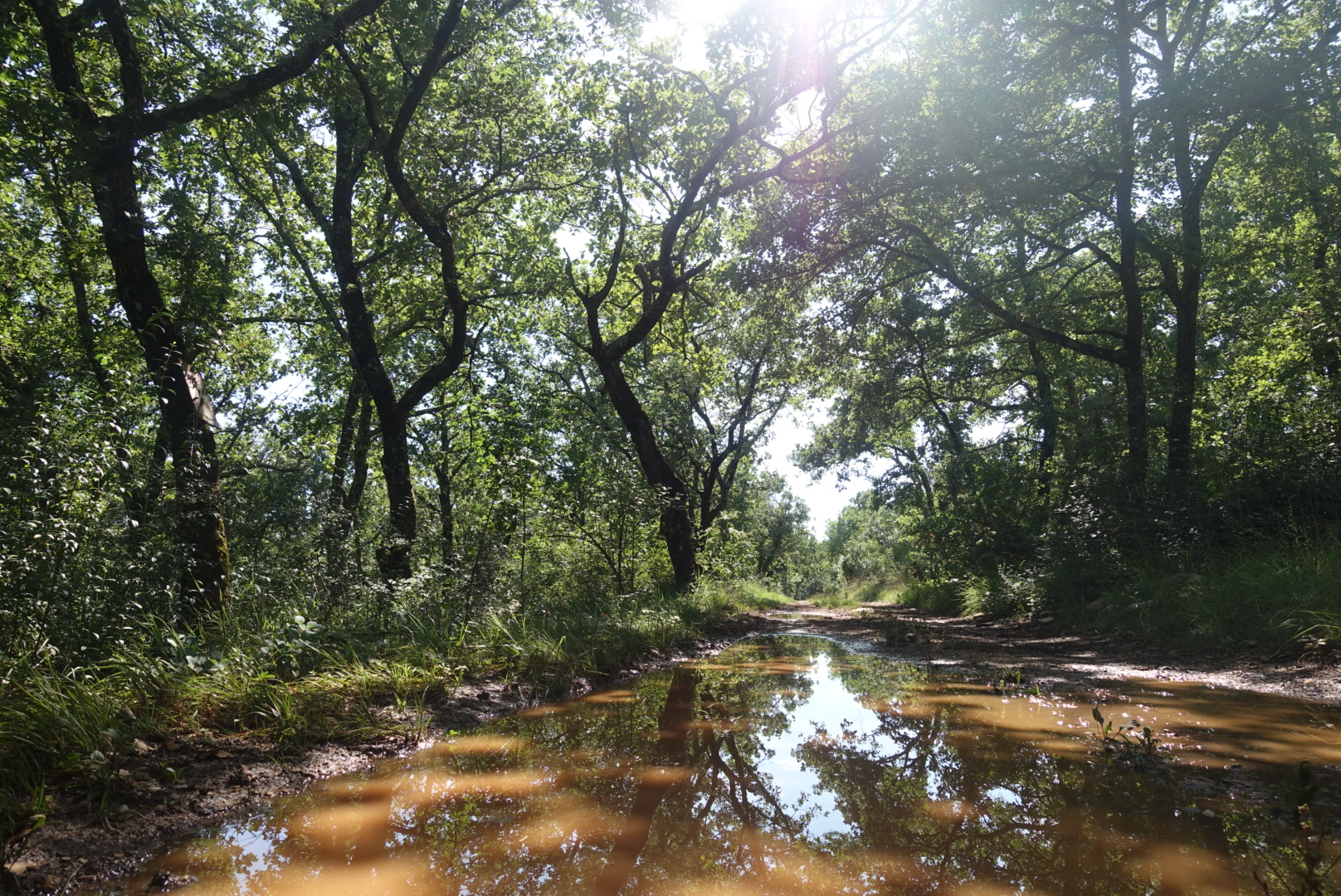
Additionally, that morning we had the idea of inviting the only two other groups of guests on the camping (a german couple and four Dutch youngsters in a terribly old Volvo) to a barbeque. And so we proceeded as planned: the day was spent visiting Buje, and the evening was spent barbequeing with our neighbours. To our surprise, 3 other groups of people happened to arrive in the meantime as well, and they gladly joined the small gathering. It was incredibly fun to see the event materialise out of some small conversations, and to be frank, we felt quite proud of the gathering once we were laying in our beds.
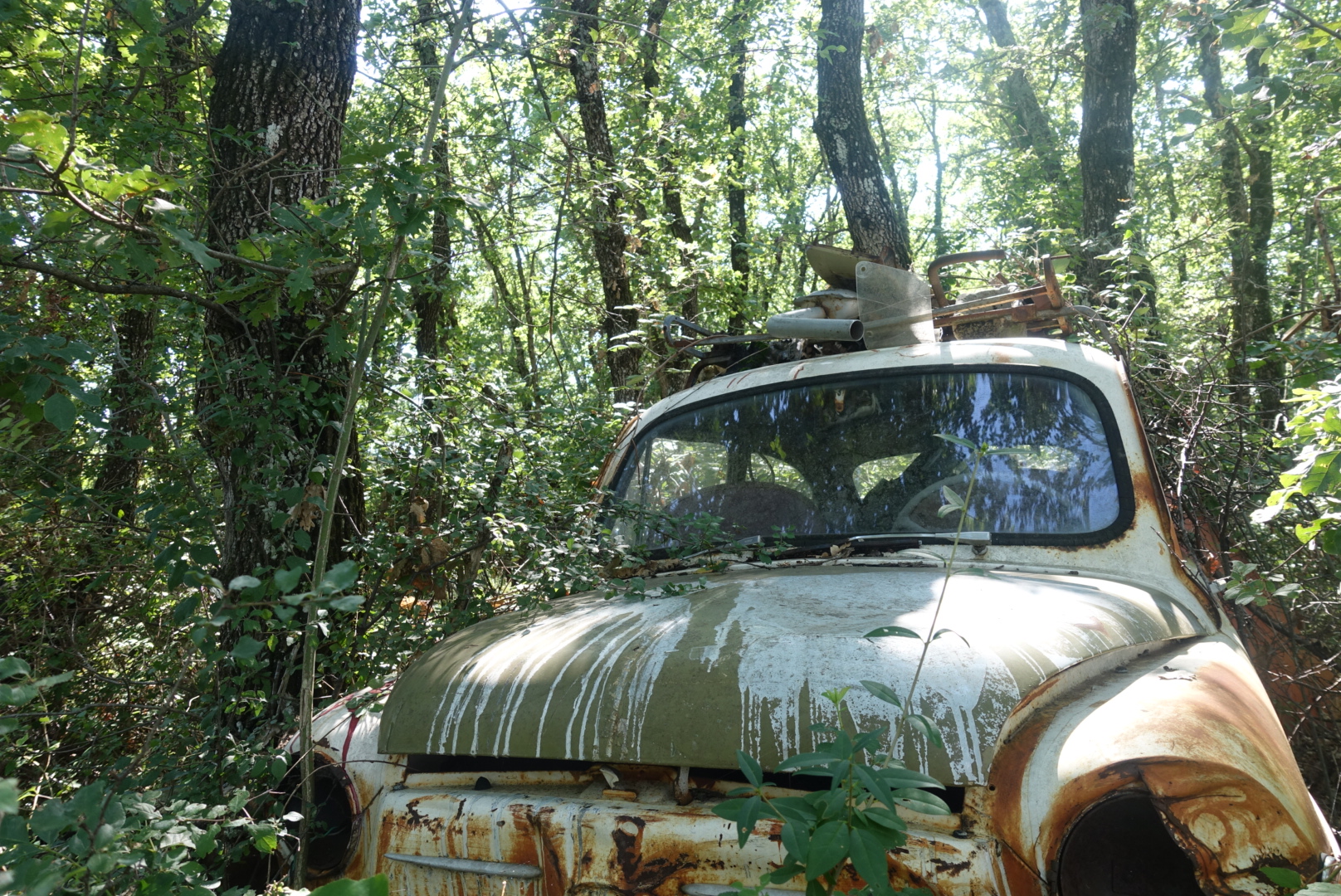
The real resting day, the sunday, was spent by me taking a walk to be alone for a little while (which is much appreciated by the other half, as she told me she quite appreciates me taking a hike every now and then). As I walked up and down the nearest hill I noticed that, when you travel even slower than a bicycle across the land, you will see even more of the details around you. As a result a significant part of that walk was spent photographing flowers and butterflies. The other two pictures above were from that same walk.
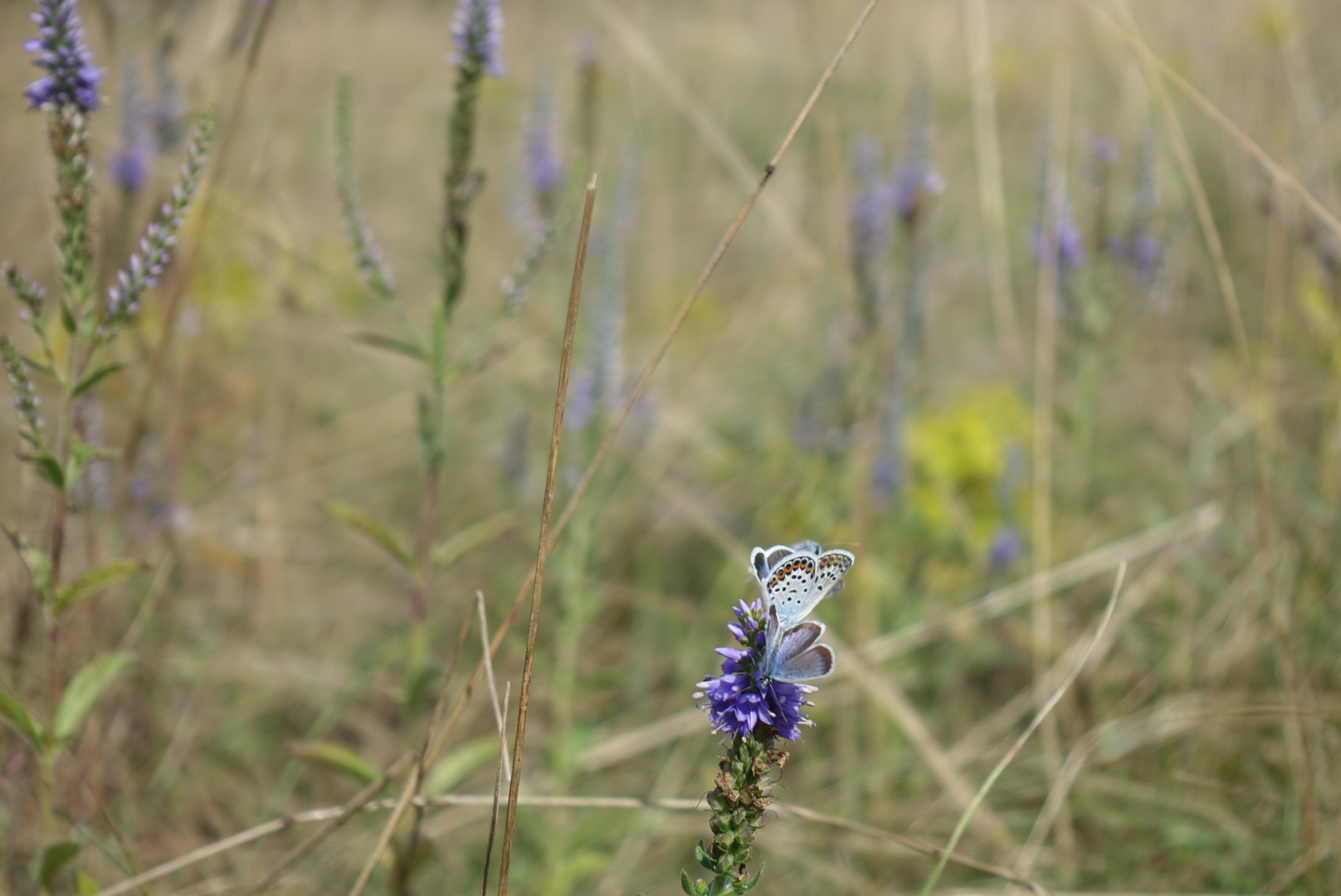
Tour of some Istrian villages
Once more we set off on our bicycles. The two ensueing days left quite a mark on my memory. We visited the towns of Groznjan, Zavrsje and Motovun (excuse the lack of diacritics, dear Croatians). All of these towns have a long and storied past which is interesting to look up. Likewise, all of them are rather beautiful and well maintained, each in their own way. I do not have enough knowledge of history to know what I am talking about, but I left these places behind with the notion that I could now imagine what life in the medieval times must've looked like.
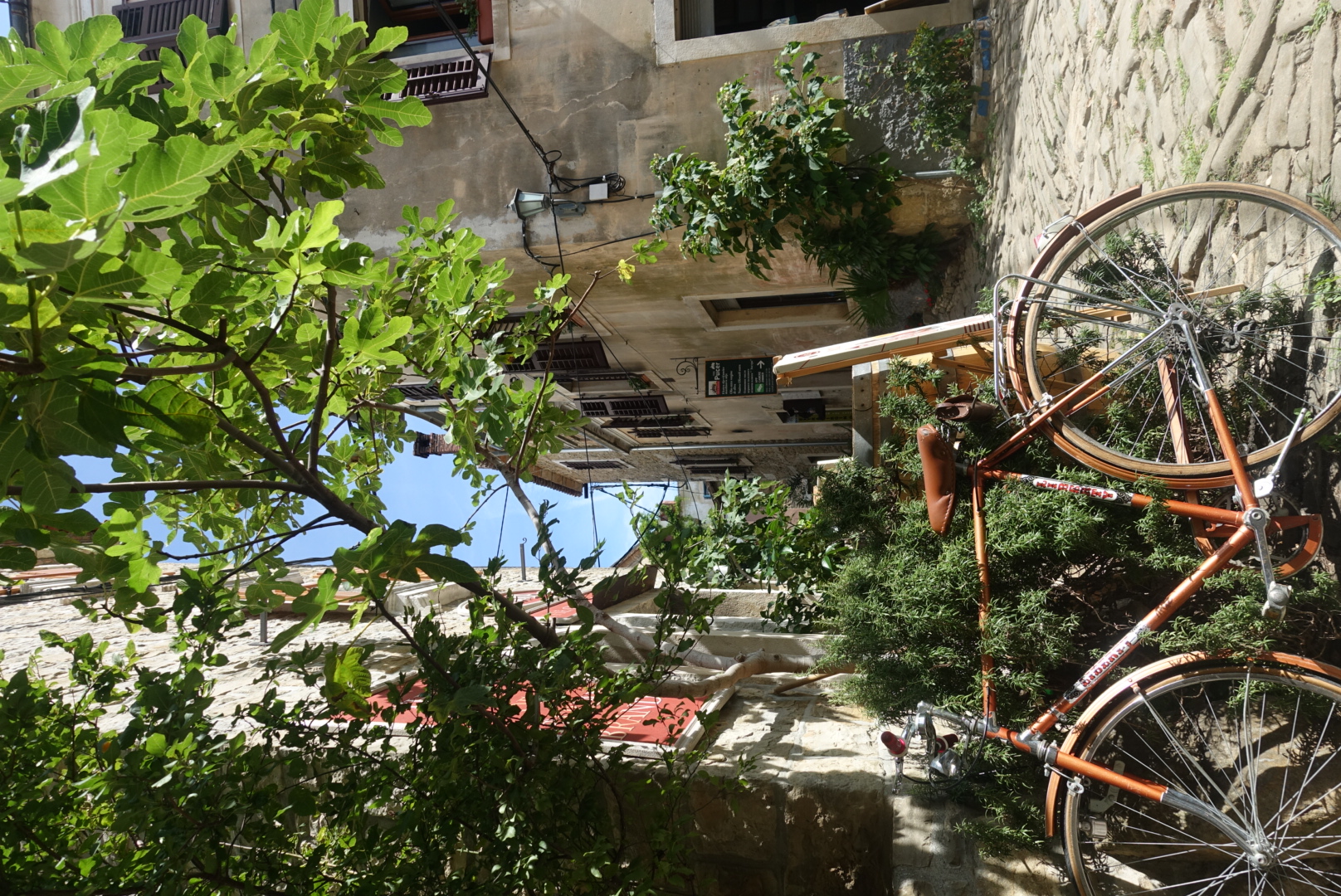
Groznjan is well maintained and bears the nickname of "city of artists", a well-deserved name for historical reasons. But to call it a living city would be a lie. Indeed there are still some inhabitants left, but they are very few (someone who was working in one of the shops, but lived relatively far away, told us there are about 30 people truly living there). Now one could feel sad at this prospect, but the tourism indirectly causes this place to keep its picturesque appearance. But there is a cost: the beauty is preserved without the soul that once produced it, it is a museum rather than a village. One can see what a lack of inhabitants and tourism does to a village a stone's throw away in Zavrsje.
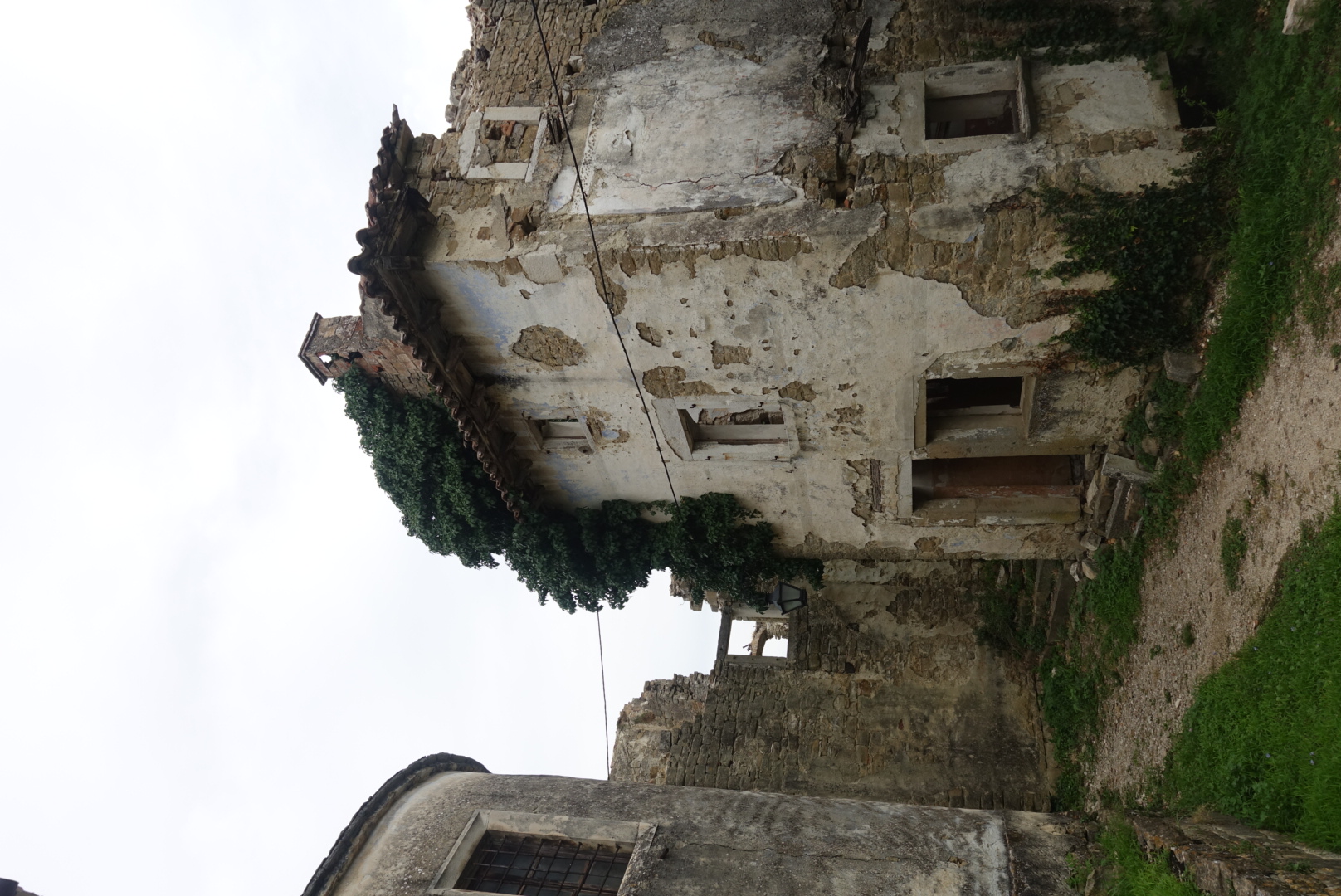
Here the lack of inhabitants, I suppose caused by modernity driving people to the cities and other congregations of industry, have caused the village to decay. Certainly the remaining inhabitants keep their houses, the church and some auxilliary buildings in shape, but nature is reclaiming the rest. Somewhat ironically then, that this process is itself inviting tourists to come over and view its slow progress.
A place that is on the verge of becoming something different is Motovun. Seeing it rising out from the valley for the first time was truly impressive. If, like me, your travels here allow you to imagine what the middle ages must've looked like, then you'll picture them most vividly when you're at the foot of the mountain on which Motovun resides.
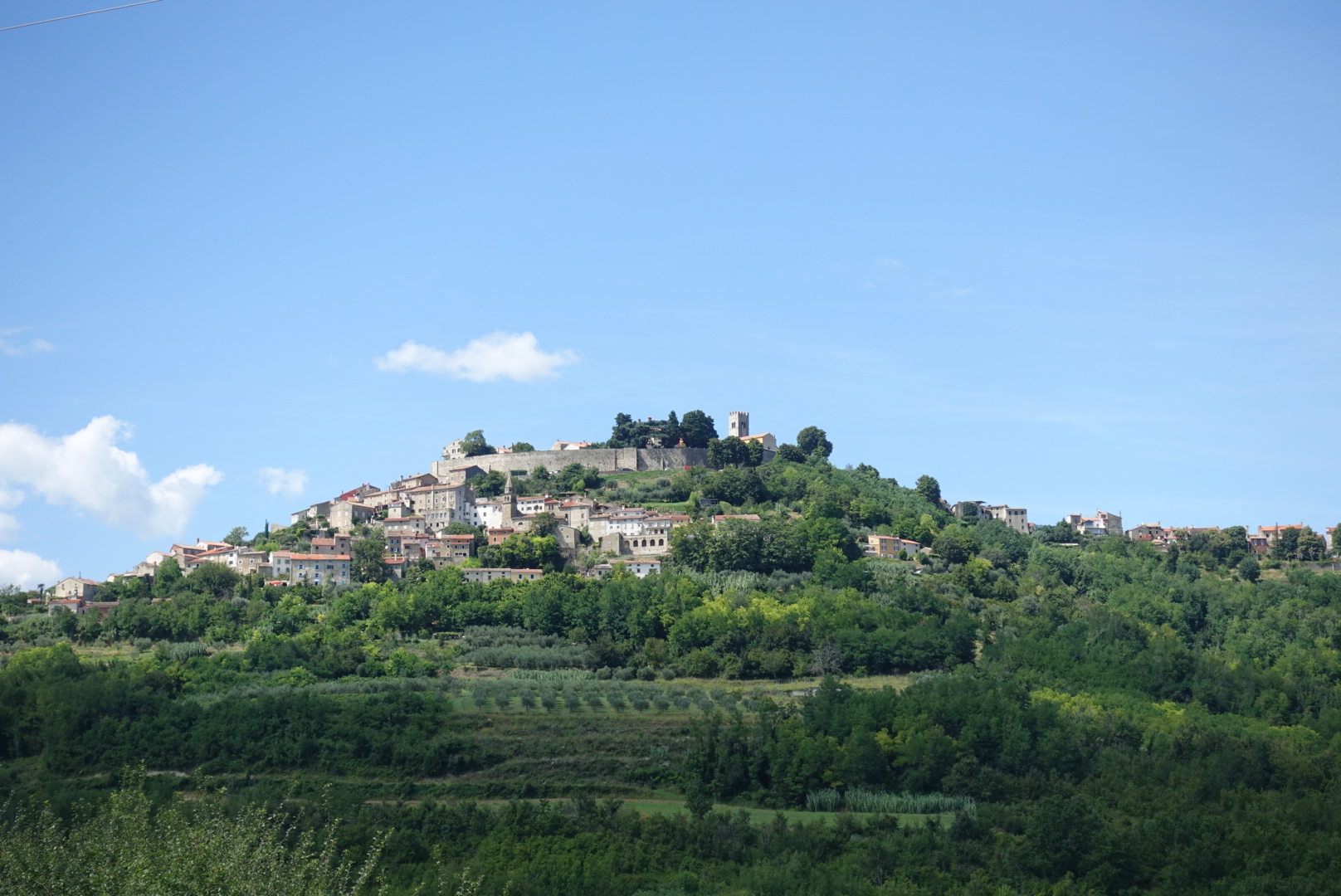
Pictures cannot really do justice to the slow ascent up and around the surrounding lands until you're finally able to climb the remaining steps by foot (after a long break and a shower that we took in its camping). Although we made a quick ascent to the top in the evening only to descend quickly thereafter, the view of the sunset is ingrained in my mind for quite some time to come. With a bit of help from my digital map, we were even able to see the church of Groznjan, the place we were at that morning, from a vantage point.
A short read online explains that the inhabitants of Motovun are currently fighting real estate speculation by foreign developers. And while you're walking the steps to the top, you'll already find more than enough appartments for rent. These villagers of Motovun are collectively preserving a heritage that is a thousand years old. I wish them wisdom and luck in maintaining their place's future. Having seen Groznjan and Zavrsje, I hope that Motovun will fare better than the villages that share its valley.
If you're reading this because you're thinking about cycling the Parenzana, don't hesitate and do! Make an effort to visit villages surrounding the route, preferably not just the ones I've written about, but others as well. The route itself is well-cyclable gravel with occasional chunky sections, and although the official website state that you need a mountainbike, I would've gladly cycled it on my old touring bike with 35mm tires (albeit cursing a bit more than I did riding it on my fully rigid mountainbike with tires that are overdimensiomed for this route). I hope I return to the hills of the Istrian peninsula one day, probably with the intention of just stringing together mountainbike routes and other unpaved roads.
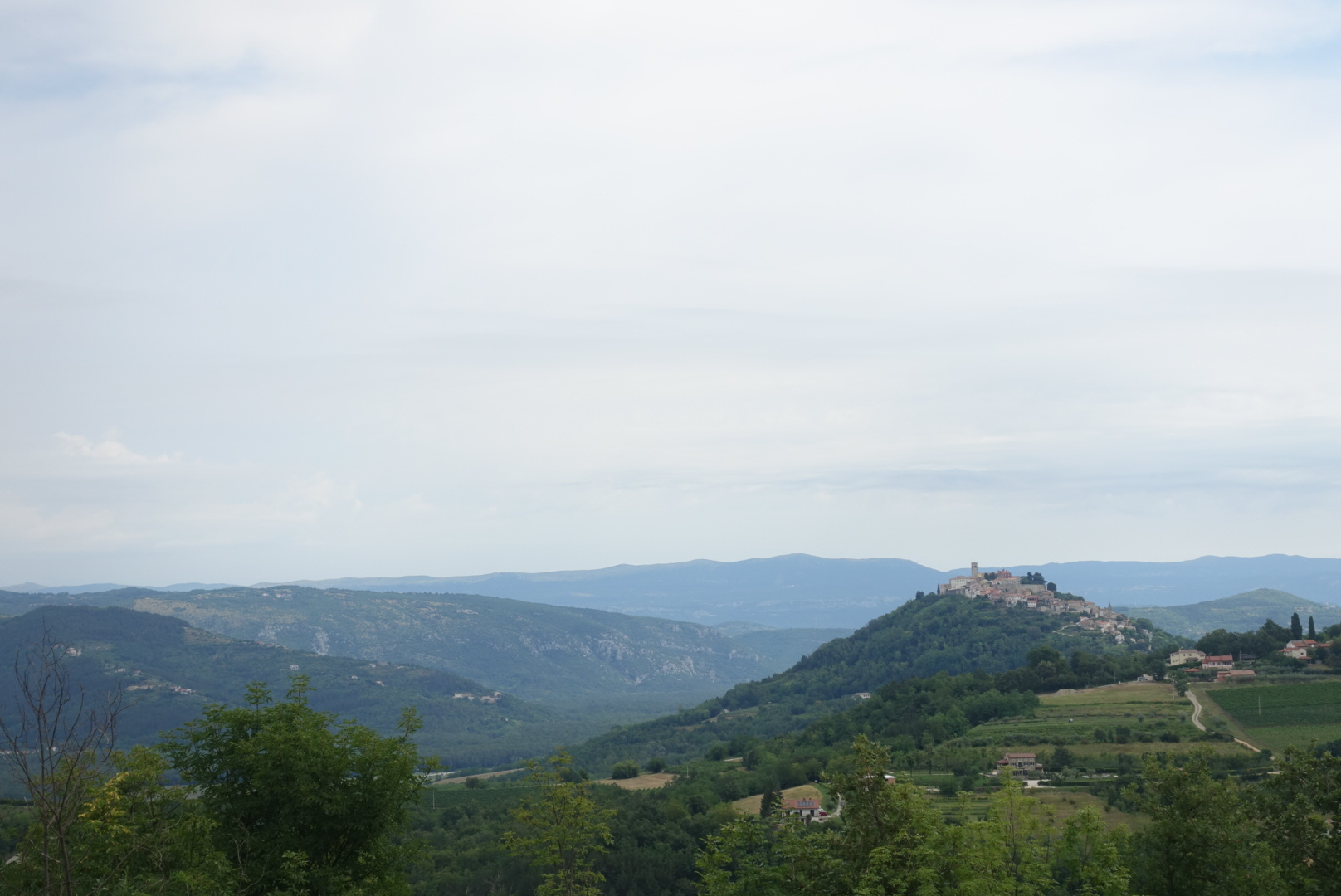
Back to the sea
We spent a bit more time in the valley surrounding the river Mirna as we cycled out of it towards Porec with a last big ascent. The landscape was just as green, but slowly began to change. The hills became less pronounced and we traded our expansive vistas for vineyards as our wheels kept crunching the gravel underfoot. We took this last day of the Parenzana to afford ourselves some luxuries: we had a coffee break in Vizinada and had dinner for lunch in Gulici.
At some point we noticed that we were getting closer to closepacked civilisation and tourism: the highway crossings became more frequent, we found a natural cave being used as a dumping ground for trash, and plastic packaging started to litter the sides of the road again (in fact, another great part about the Parenzana, as my girlfriend noticed as we just left Motovun: there is nearly no trash on the sides of the route at all). And then suddenly, as we descended the last couple of meters towards the sea next to Porec and turned a corner, we were truly in the center of a giant beach resort. I always feel like an outcast when I leave behind the trees and exchange them for this kind of civilisation, but this time being glad that I had my girlfriend with me as my accomplice.
I am subjecting myself to doublethink when I am being a bicycle tourist. I won't pretend that I'm not looking down on some kinds of tourism around me, like the kind I see at Porec: beaches subsumed by campings, hotels and resorts. Yet at the same time I am and feel like a tourist as well, contributing in my own tiny way to a place's evolution to veer towards a direction whose destination is a place full of appartments for hire and souvenir shops, and where the inhabitants' warmth and curiosity towards visiting strangers is greatly reduced. And yet, away from the beaches and with an ongoing population decline in the villages, I've come to realise there might be a preserving effect of tourism. Perhaps one day that effect can be properly harnessed.
The islands
We'll spend a couple more days at the Istrian coast, moving towards Pula. There we intend to catch a ferry towards the island of Cres, a decision which was made with the help from a Slovenian guy at one of the campings we stayed at. We intend to discover the island by meandering over its peaks and close to its coasts, but we'll likely start out by taking some days of rest once more. We're both looking forward to it!
